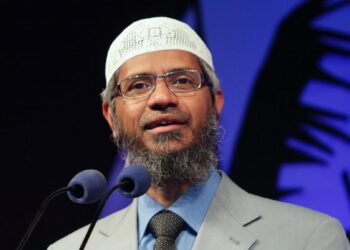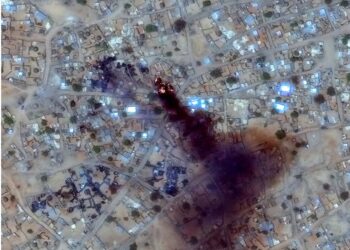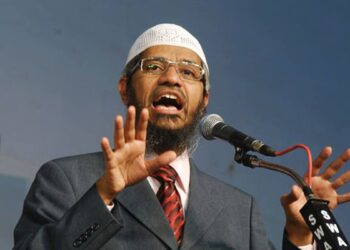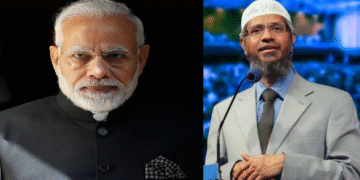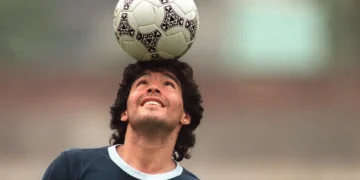Highlights
- Satellite images reveal a new mass killing in El Fasher, North Darfur.
- Over 2,000 unarmed civilians reportedly killed by the Rapid Support Forces (RSF).
- Yale University calls the violence comparable to the first 24 hours of the Rwandan genocide.
- Evidence points to “ethnic cleansing” against non-Arab communities.
- UAE faces questions over possible arms support to RSF.
Another Tragedy in Sudan’s Civil War
The brutal civil war in Sudan has taken another horrifying turn. Satellite images and social media footage have exposed a massacre in El Fasher, the capital of North Darfur, where the Rapid Support Forces (RSF) allegedly killed more than 2,000 unarmed civilians after seizing a key military base.
The RSF and Sudanese Armed Forces (SAF) have been locked in a violent conflict since April 2023, following a power struggle between the two forces. The ongoing war has already killed over 150,000 people and displaced more than 14 million.
Evidence of Atrocities from Space
Much of what is known about the recent massacre comes from satellite imagery and video analysis conducted by human rights researchers and journalists. These images revealed burning buildings, destroyed settlements, and even blood stains visible from space.
Journalist Kaamil Ahmed of The Guardian said,
“It’s been used not only to monitor what’s happening on the ground, but also to warn people when attacks are likely, by tracking the buildup of military equipment outside major cities.”
Read more: Dr. Zakir Naik’s Possible Bangladesh Visit sparks India’s Strong Hopes for His Arrest
He added,
“This is the first time I’ve seen satellite imagery pick up blood stains on this scale on the ground. It’s truly been a bloodbath.”
What Happened in El Fasher
According to the RSF’s own statement, the group had “extended control over the city of El Fasher from the grip of mercenaries and militias.”
Sudanese army chief Gen Abdel Fattah al-Burhan later confirmed that his forces had withdrawn from the city “to a safer location,” effectively conceding defeat.
Kaamil Ahmed explained that the massacre followed months of siege and the earlier attack on Zamzam camp, which housed hundreds of thousands of displaced people.
“When Zamzam was attacked and taken over in April, many people fled to El Fasher. Since then, the city has been the main focus of the RSF. The massacre that people had been warning about has finally happened.”
Reports from the ground describe killings inside hospitals, with medical workers and patients executed by RSF fighters. Survivors walked for two days to reach Tawila, a nearby town in North Darfur, to escape the violence.
Satellite Evidence of Mass Killings
The Yale University Humanitarian Research Lab, which has been tracking the conflict through open-source intelligence, confirmed evidence of mass killings consistent with RSF attacks.
Their report stated that El Fasher appears to be going through a “systematic and intentional process of ethnic cleansing of Fur, Zaghawa, and Berti Indigenous non-Arab communities through forced displacement and summary execution.”
Analysts also found “door-to-door clearance operations” — where militants searched homes, executed residents, and left behind visible clusters of bodies seen in satellite images.
Nathaniel Raymond, Executive Director of Yale’s Lab, said that satellites had detected “red discoloration on the ground,” likely from blood.
“নিজেই তৈরি করুন নিজের অনলাইন স্টোর — কোনো কোডিং জ্ঞান ছাড়াই!”
Videos Used as Fear Tactics
The RSF has reportedly circulated videos of their attacks, showing “dozens of unarmed men being shot or lying dead, surrounded by RSF fighters.”
Kaamil Ahmed explained,
“What people tell me is, it’s partly pride, partly intimidation. They release these videos as a warning to others.”
Journalists have since identified specific RSF commanders involved in these atrocities by analyzing and geo-locating the videos.
Global Reactions and UAE’s Alleged Role
The United Nations condemned the killings, calling them a new low in the world’s “largest humanitarian crisis.”
However, the global response remains limited.
Earlier this year, 17 countries, along with the EU and African Union, met in London to discuss Sudan’s conflict. Yet, criticism arose because some participants, including the UAE, were accused of being involved in the fighting.
Sudan’s military government has accused the UAE of supplying weapons to the RSF — an allegation the Emiratis have denied.
A leaked UN report in April revealed that several UAE transport planes flew into Chad, allegedly smuggling arms across the border into Darfur.
Kaamil Ahmed noted,
“The UAE’s relationship with the RSF can be traced back to the 2015 Yemen war, where the RSF was used to recruit fighters for the Saudi and UAE forces.”
He added that the UAE’s interests in Sudan are also economic:
“In Darfur, there are lots of big goldmines. Most of the gold shipments in Sudan go to the UAE.”
Source: The Gurdian
Share via:









